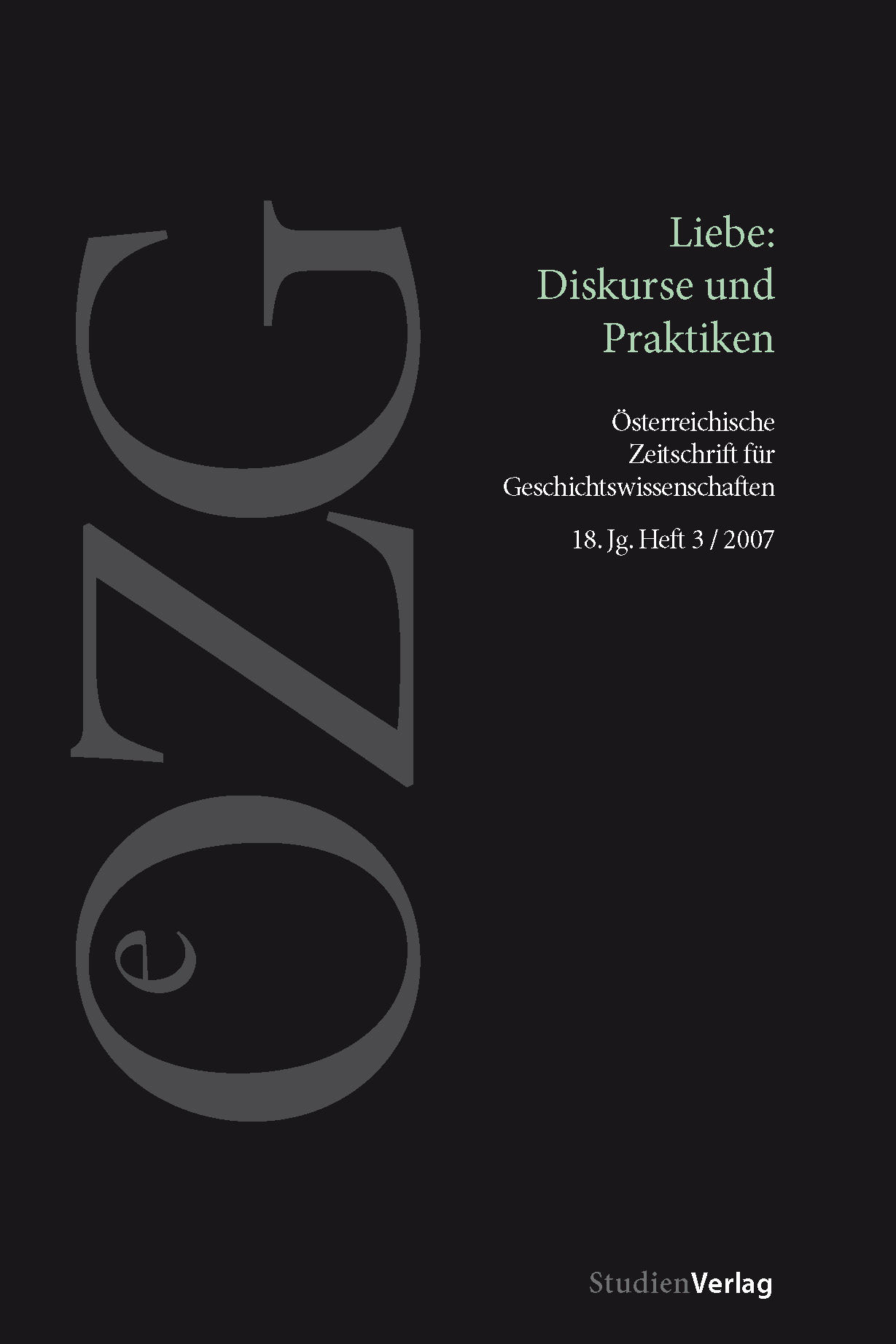Liebe im Zeitalter der Elektrizität. E. T. A. Hoffmanns homines electrificati
DOI:
https://doi.org/10.25365/oezg-2007-18-3-4Abstract
At the end of the 18th and the beginning of the 19th century, the gap between science and technology on the one hand and humanities and the arts on the other was just about to open up. However, the connections between the two were still highly visible, particularly to E. T. A. Hoffmann (1776–1822). Like other writers, he watched the developments of technical progress closely, especially innovations in electricity and galvanism, and translated these new approaches into poetry. In this way, his literary conception of love focuses on the cultural practices of natural sciences, aesthetics and poetry. The article first explores knowledge about electricity from a historical and technical point of view, especially of electric bodies in the 18th and early 19th century. The second part researches the interrelation between electricity and mesmerism around 1800. The third and main part analyses the relation between the literary staging of love and electricity with reference to several stories and novels by Hoffmann. In his literary work women and men in love can be understood as electrical devices. Specifically, the bodies of women in love are charged with electricity, which they then discharge when they come in contact with another body. With this transformation of technical knowledge into poetry, a new code of love arises. The literary description of electric love conceives love as being impulsive, women as being active and men as passive and is therefore diametrically opposed to the concept of controlled emotions. Accordingly, the paper presents new literary concepts of love inspired by electrical experiments at the end of the 18th and the beginning of the 19th century.


